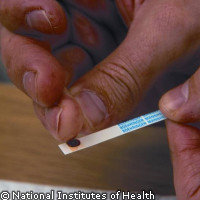Scientists identify molecule behind fat deposition and insulin release
Scientists at the Karolinska Institute in Sweden have identified a molecule which plays a key role in both the regulation of body fat and the release of insulin from the pancreas. Two papers presenting the results are published online by the journal the Proceedings of the National Academy of Sciences (PNAS). Both studies involve a receptor molecule called ALK7. ALK7 is found in several organs involved in regulating the metabolism, including the pancreas, adipose tissue, the gut and the brain. However, the physiological functions of this molecule are not well known. In the first study, a team led by Carlos Ibáñez studied mice in which the gene responsible for producing ALK7 had been switched off. They found that these mice developed abnormally high levels of insulin in the blood. Over time, this led to a reduction in the body's sensitivity to insulin, impaired glucose tolerance and a condition called liver steatosis, in which the liver accumulates large amounts of fat. In the second study, the researchers investigated the links between ALK7 and a growth factor called GDF3. The research revealed that when fed a high fat diet, mice lacking ALK7 accumulated less fat and gained less weight than normal mice, even though they ate the same amount of food. The scientists also discovered that GDF3 can send signals via the ALK7 receptor, and mice lacking GDF3 reacted to a high fat diet in the same way as mice lacking ALK7. 'These results show that lack of ALK7 or GDF3 improves energy balance in the body under regimes of high caloric intake,' explained Professor Ibáñez, who also led the second study. The researchers' findings have implications for the development of new treatments for both diabetes and obesity. 'We have shown in animal studies that removing the ALK7 receptor improves insulin release by beta cells in the pancreas, and at the same time decreases fat deposition in the situations of high caloric intake,' concluded Professor Ibáñez. 'The well known connections between diabetes and obesity make our combined findings quite exciting.' The work was funded in part by a Marie Curie grant from the EU.
Countries
Sweden



